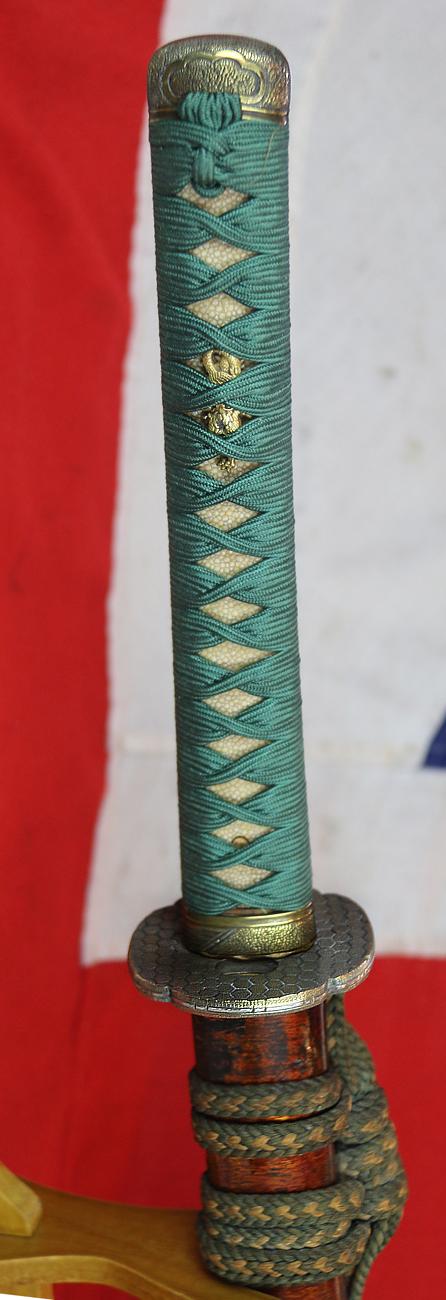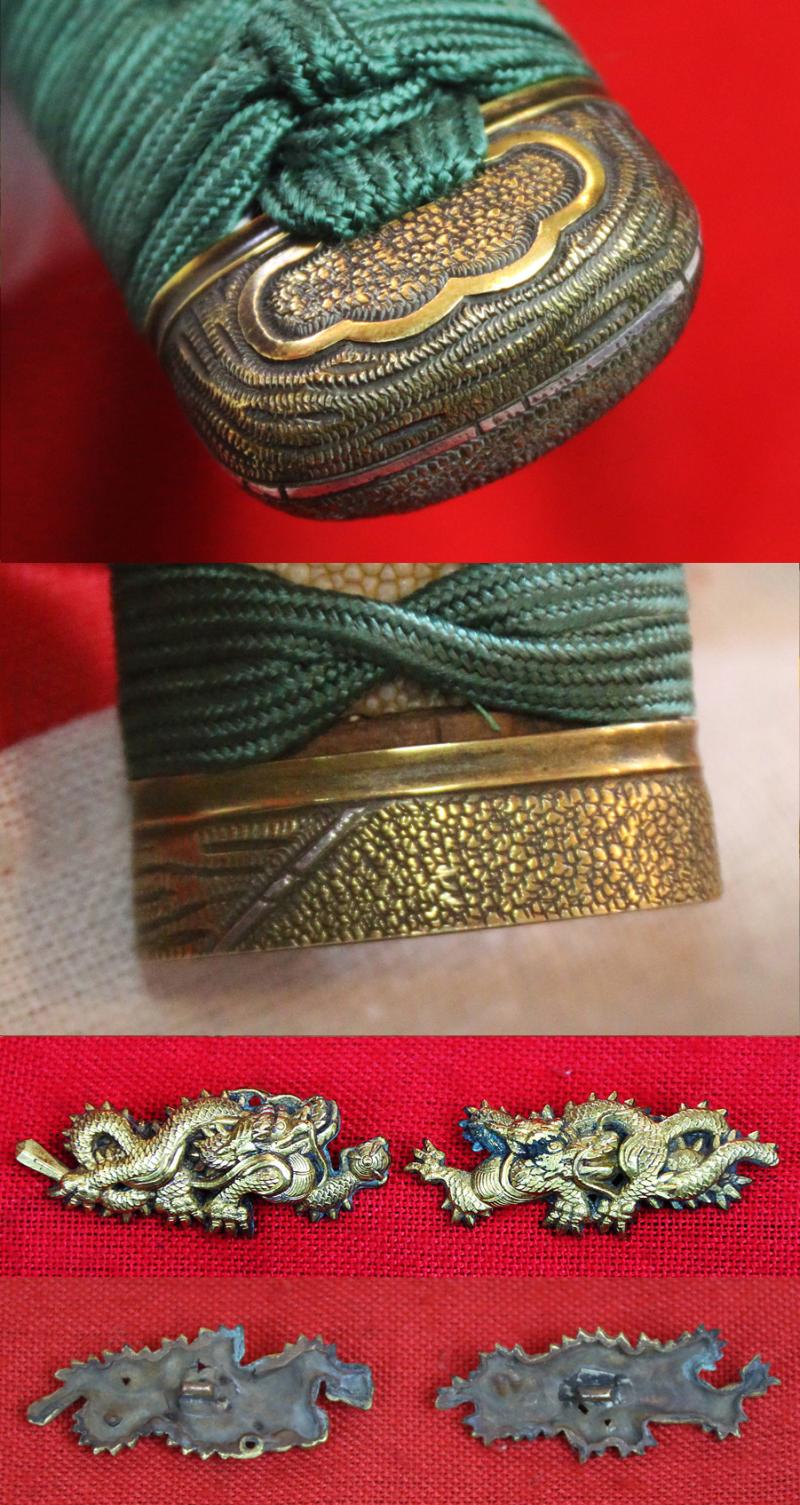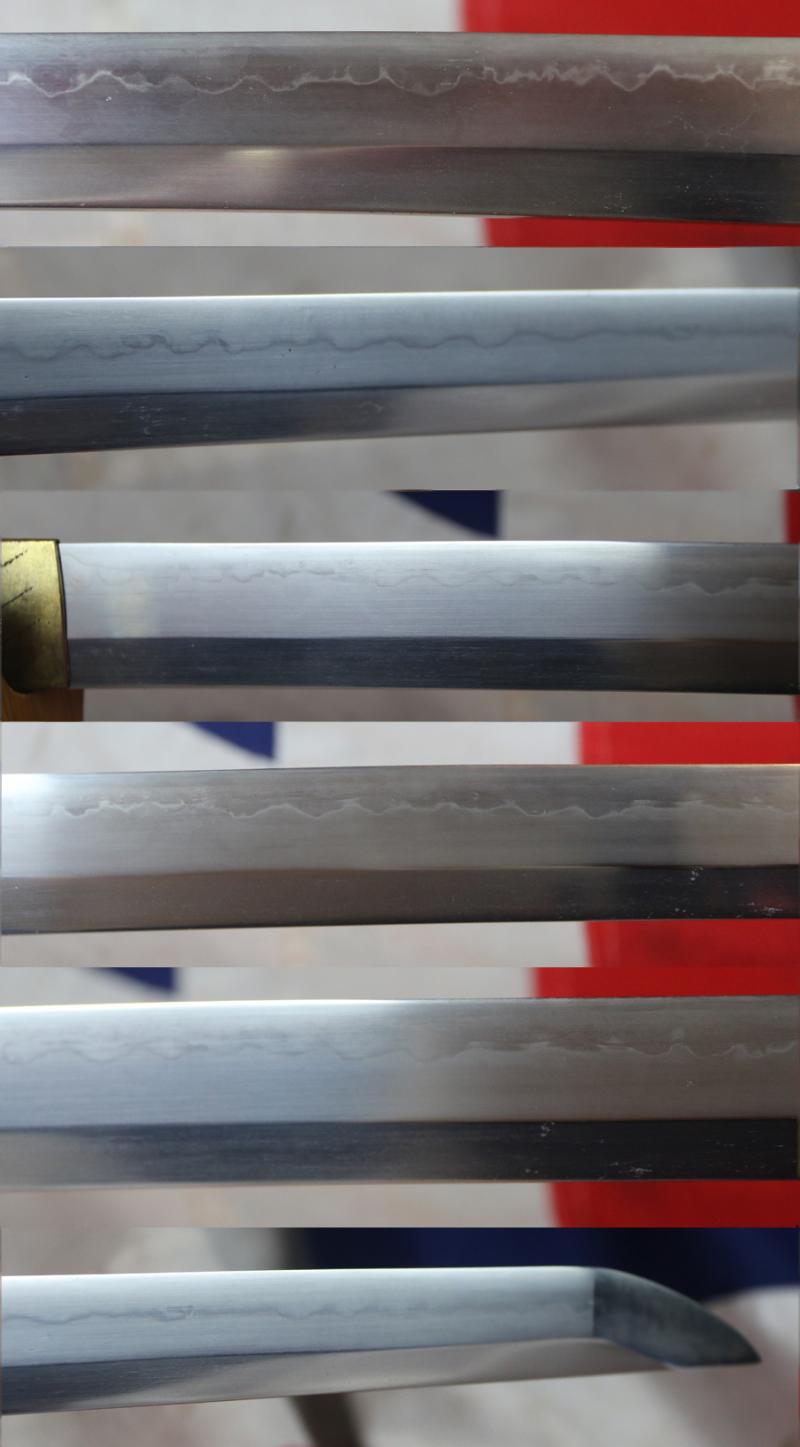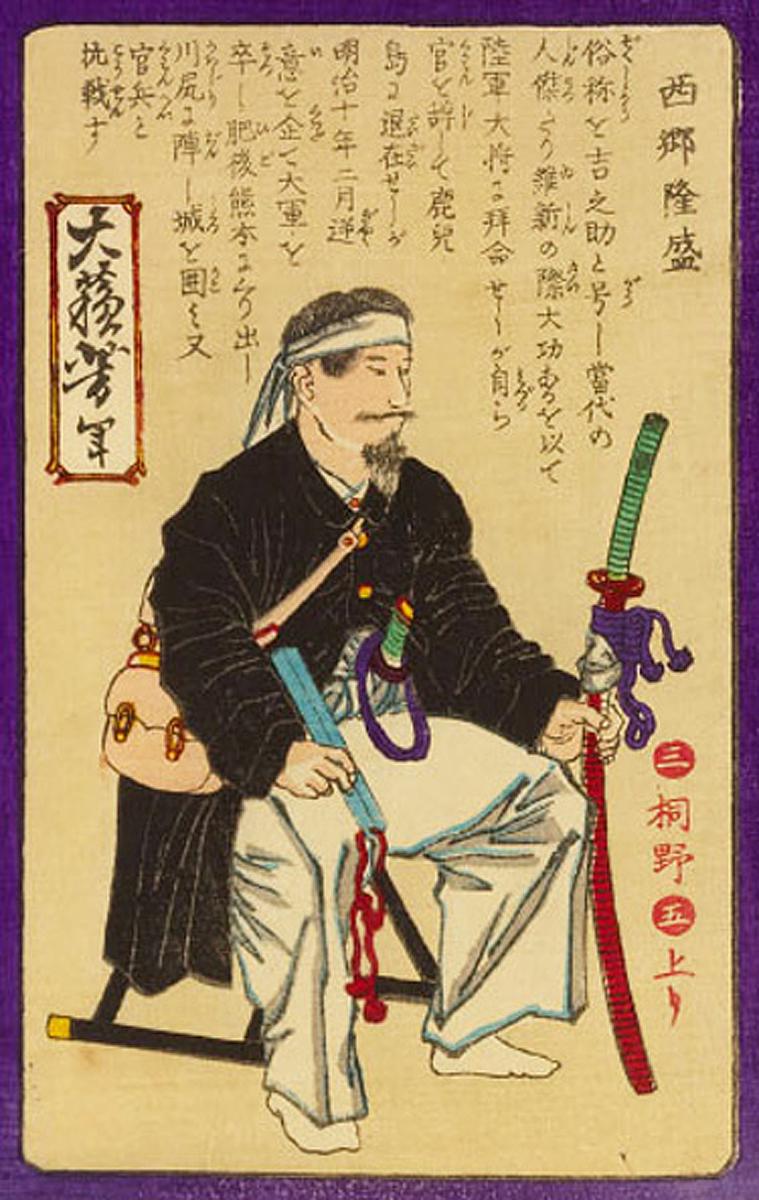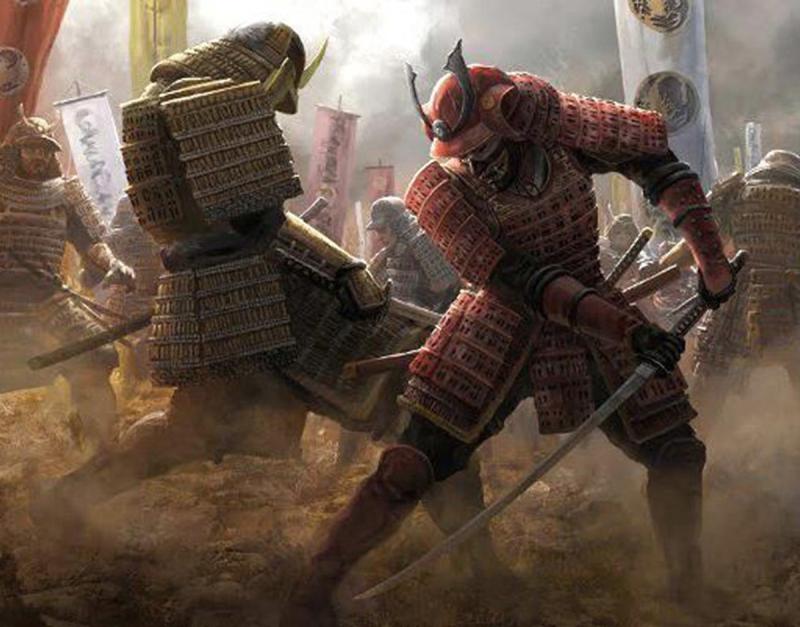A Most Impressive & Beautiful Antique Shinshinto Edo Era Samurai Horseman's Katana. This Is A Most Impressive Sword Of Commanding Presence. Likely of a Seieibushi {Elite Ranked Samurai}
All original Edo period fittings. The fuchi kashira, tsuba, sayagaki kurigata, and sayajiri are matching brass decorated with fulsome designs and silver striping. Fully matching suite of sinchu and contrasting silver line mounts to the tsuka, tsuba and saya, of the fine Matsushiro Sinano school. The saya has all its original period Edo lacquer of gold flakes, covered in very fine, tinted, clear urushi lacquer, Byakudan nuri: Transparent lacquer of a golden yellow colour, with its original, Edo period, multi coloured sageo. The menuki are Kaga Gotō school dragon menuki of pure gold overlay, overlaid over copper. They are traditional hilt mountings of very fine quality.
The blade has a superb and elaborate gunome hamon.
This is a katana was likely made for a senior, high ranking samurai, a seieibushi. based upon horseback in combat, certainly not a light and deeply cursive katana, but a battle sword, made to complete an uncomprimising task of close combat and aggressive close quarter hand to hand swordmanship. Designed as much for cleaving through samurai armour and kabuto helmets in two, as much as defeating another samurai while on horseback. Although samurai would not, one would say, be a cavalry based warrior, all senior samurai would be mounted and thus travel on horseback, and some cavalry type samurai could be deployed in battle, but with differing combat styles depending on what part of Japan they came from. The cavalry troops, being Samurai, had personal retainers that stayed closer to them in the Sonae, carried their weaponry and worked as support units, much like an European squire. They also joined the fight whenever possible (especially in the mounted infantry scenario) and were often responsible of taking heads for their lords.
These foot Samurai were also used as heavy infantry or archers to support the ashigaru lines.
Tactics
Given the fact that the Samurai could directly dismount and operate as infantry, there were some specific tactics for horsemen.
Cavalry in general was only used after the battle was already started, either to deliver a decisive victory or to trying to save the day.
Norikiri
This is a classic charge, where several small groups of five to ten horseman ride consequently (possibly with a wedge formation) into a small area against the enemy lines, to maximize the shock. It was mainly used by heavy cavalry in the East, but given the fact that the ideal target where "weavering" units with low morale or disorganized, even medium cavalry could perform this charge.
The main role of this charge was to create confusion; if it didn't succeed, the cavalry regroups and either retreat or deliver another charge.
Norikuzushi
This is a combined infantry and cavalry charge. The horseman charged first, and after creating mayhem, a second charge is delivered by infantries armed with polearms, which could keep on fighting. The main target for this tactics were ranged units detached by the army. After a Norikuzushi usually follows a Norikiri by the cavalry group.
The urushi lacquer had very small age wear, which have been 'museum style' restored, in order to match closely the original urushi, but purposely not the intrude upon the original urushi lacquer finish. It also still has its original Edo period, antique, two colour sageo silk binding cord on the saya. Although it is a little frayed and worn we decided it is important to keep it just as original as historically possible.
Overall, this katana looks like when last worn by a samurai of status at his daimyo's court, in the post Shinto era, the Shinshinto period, after 1781, before the upheaval of the Meiji reign, in the third quarter of 19th century and the eventual banishment of bushido and the era of the samurai.
.
Code: 24339



